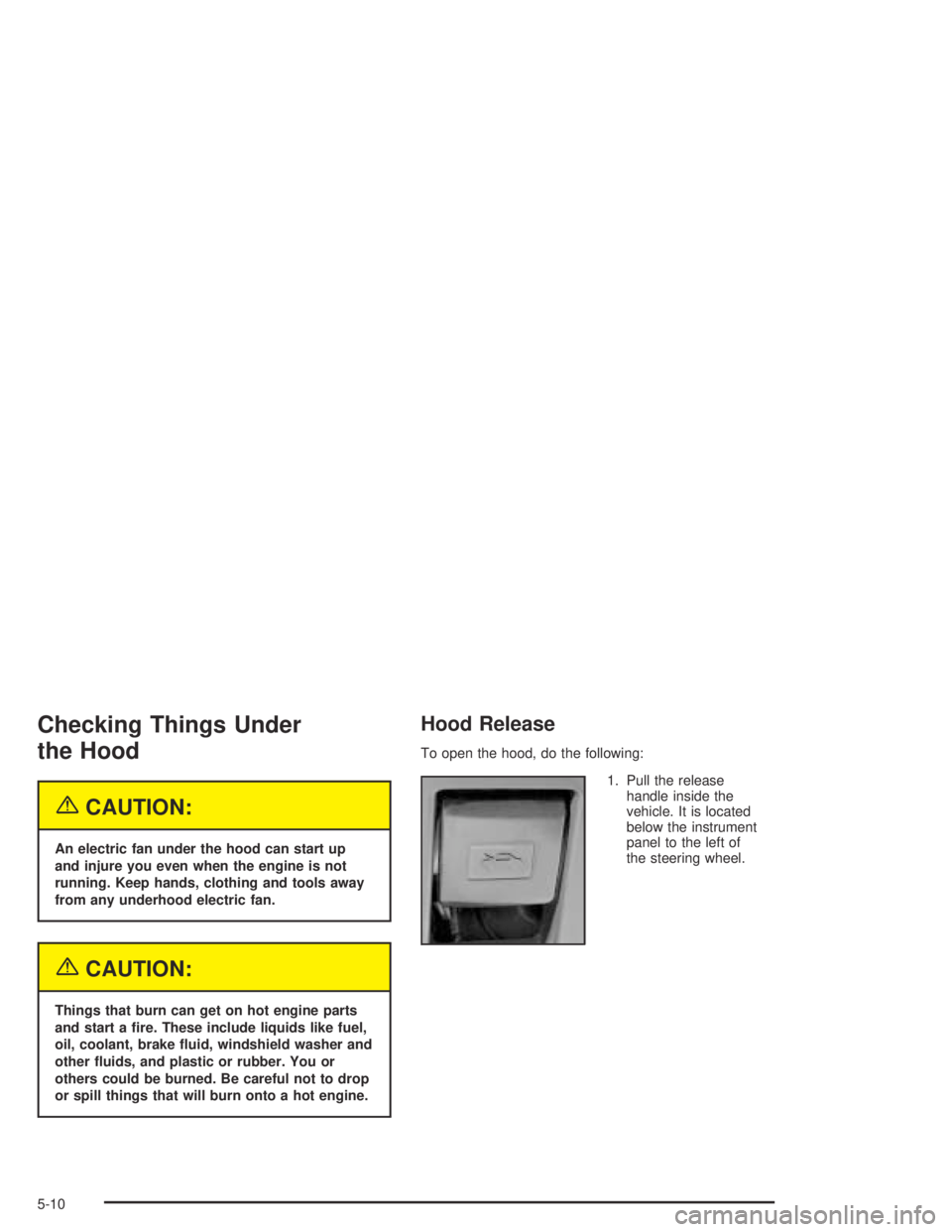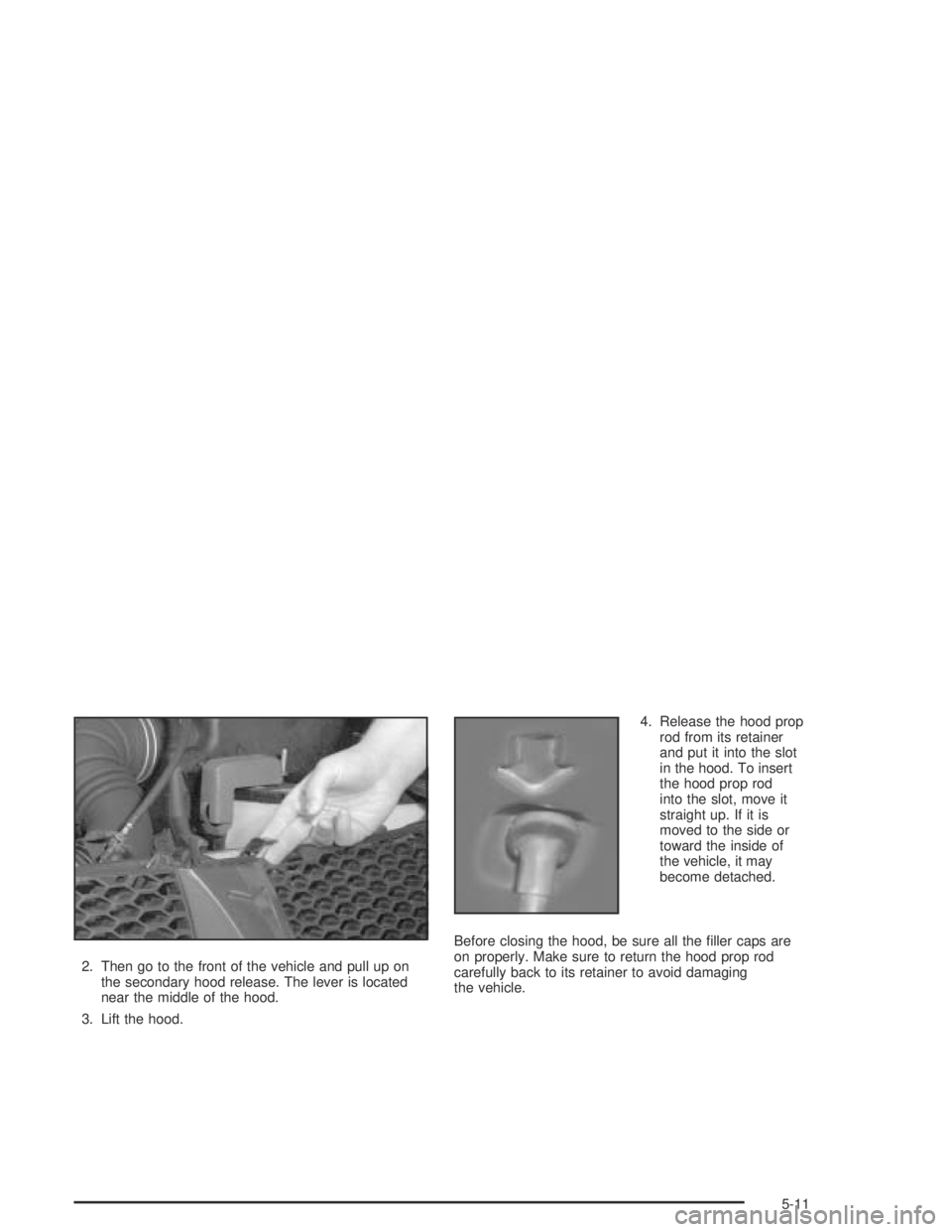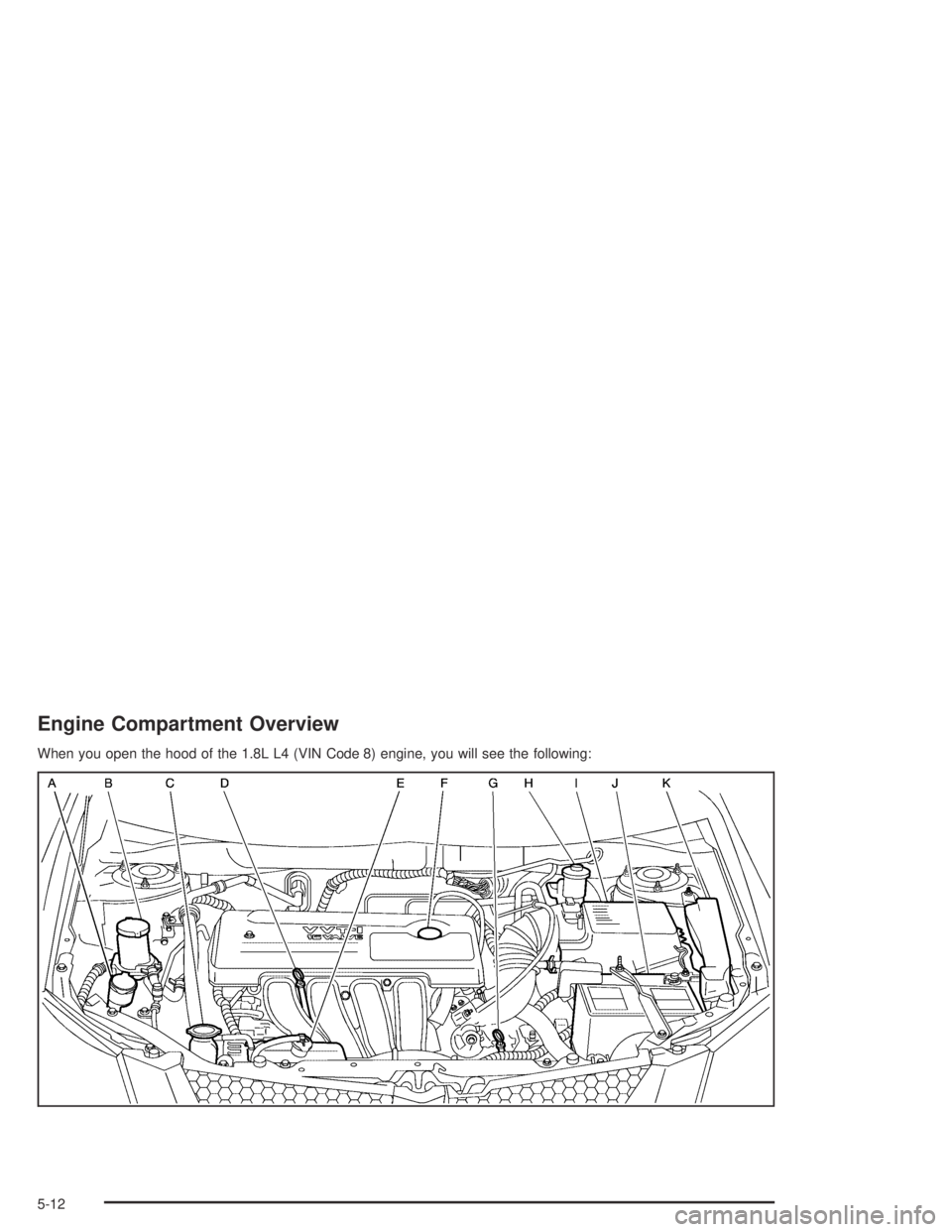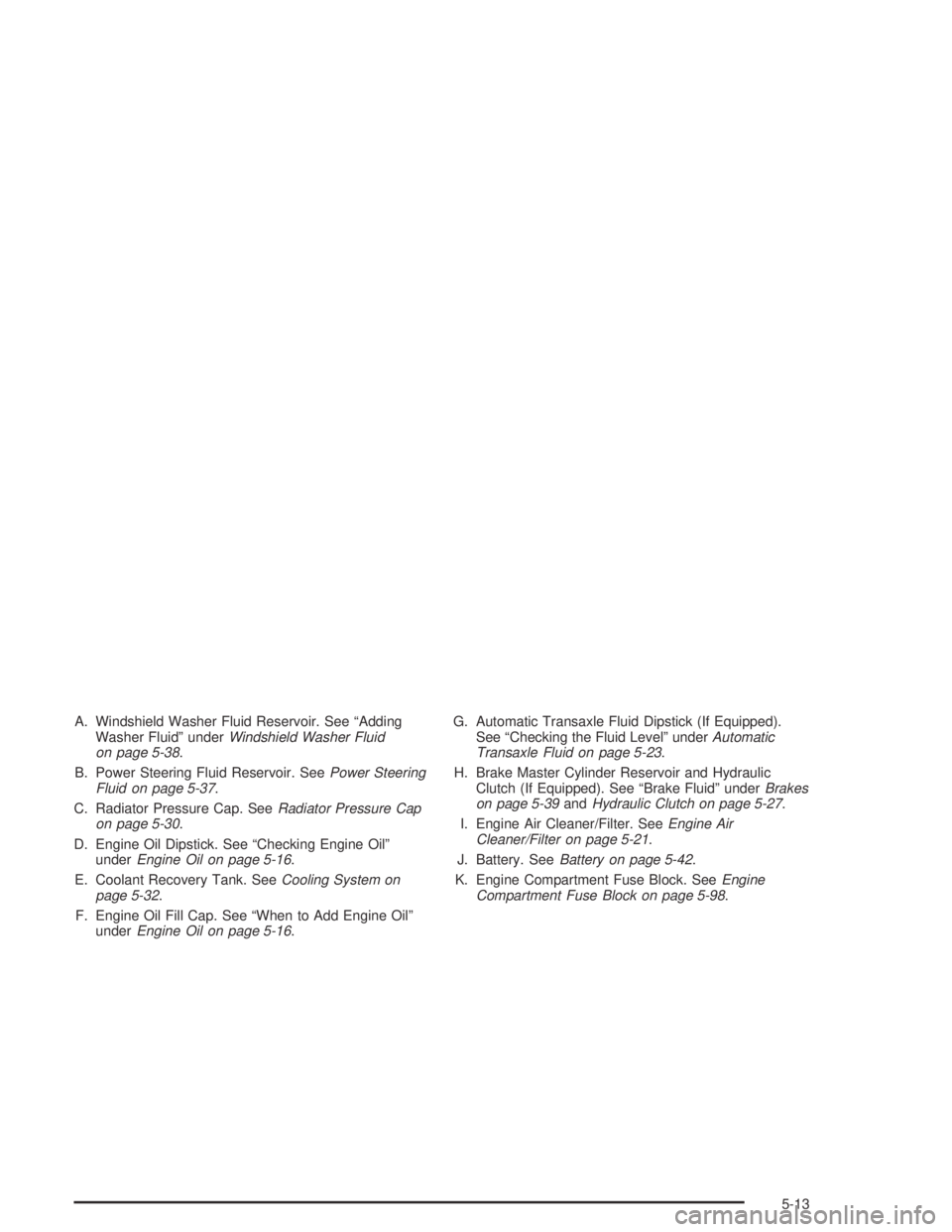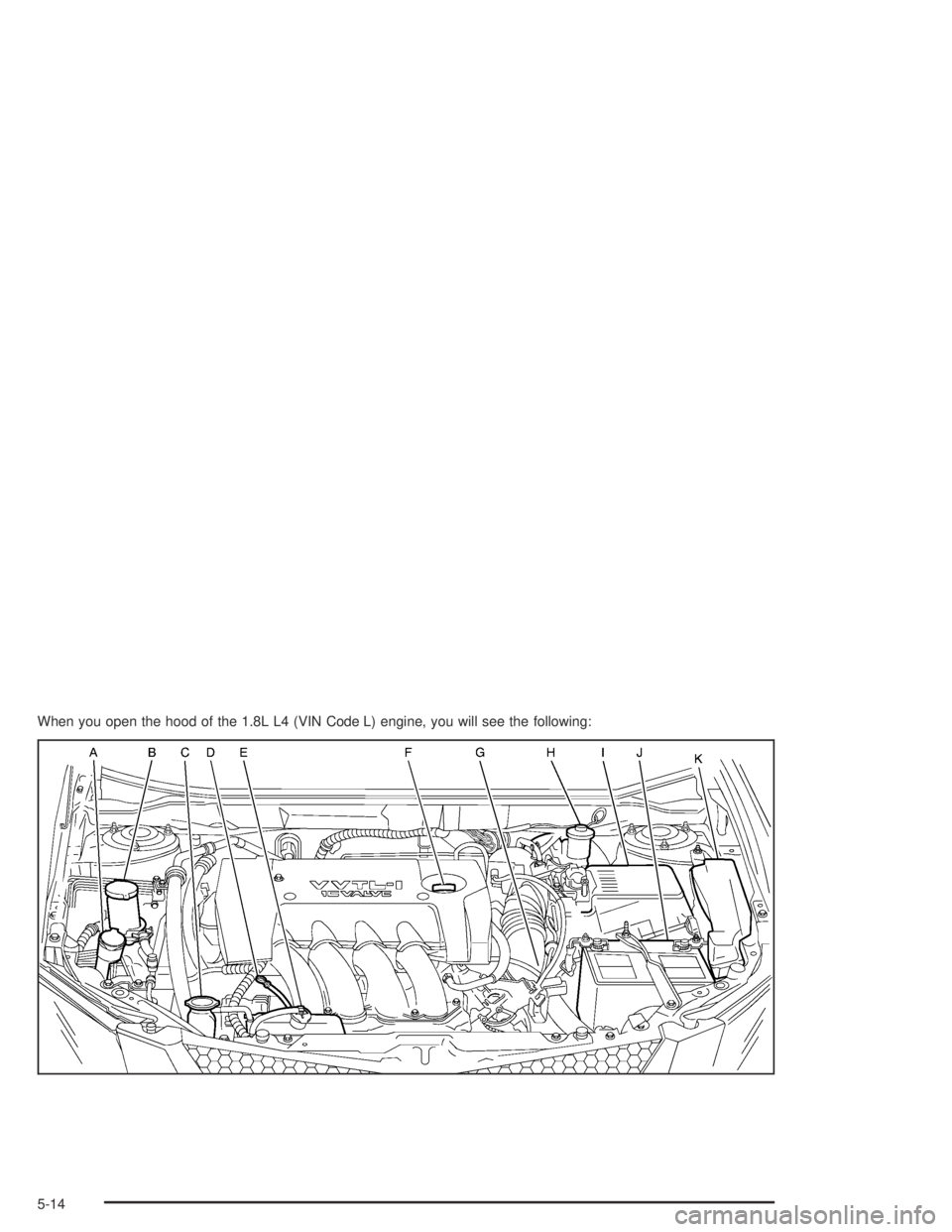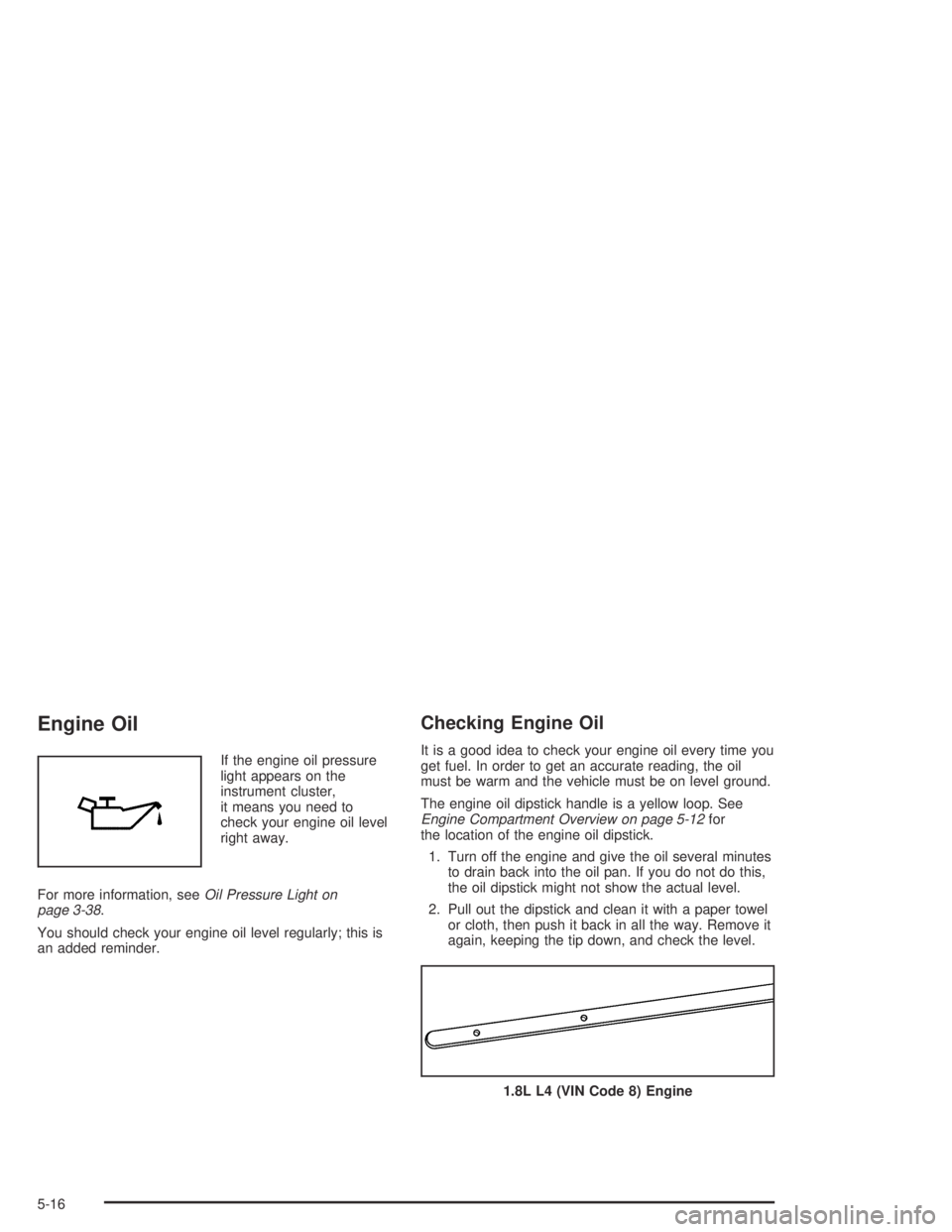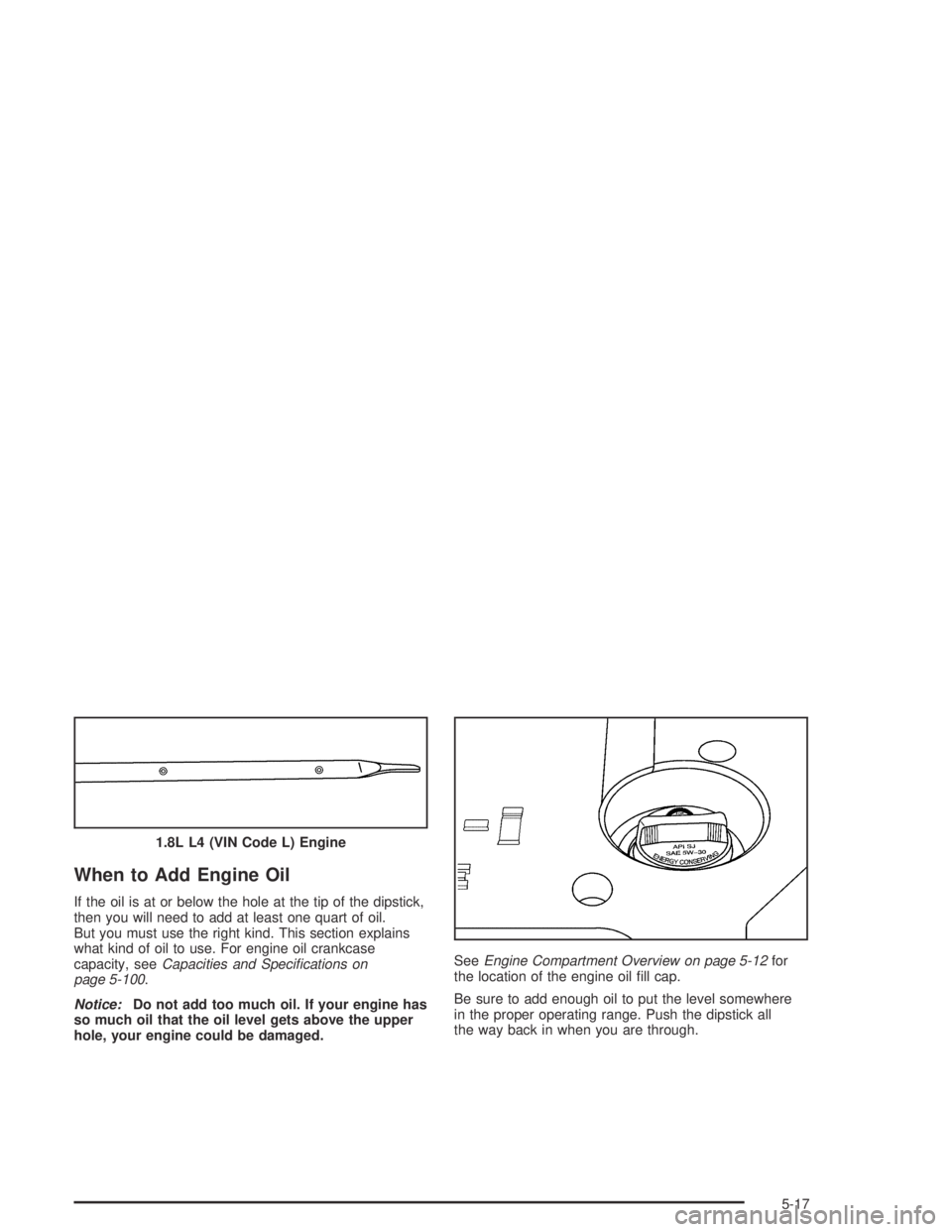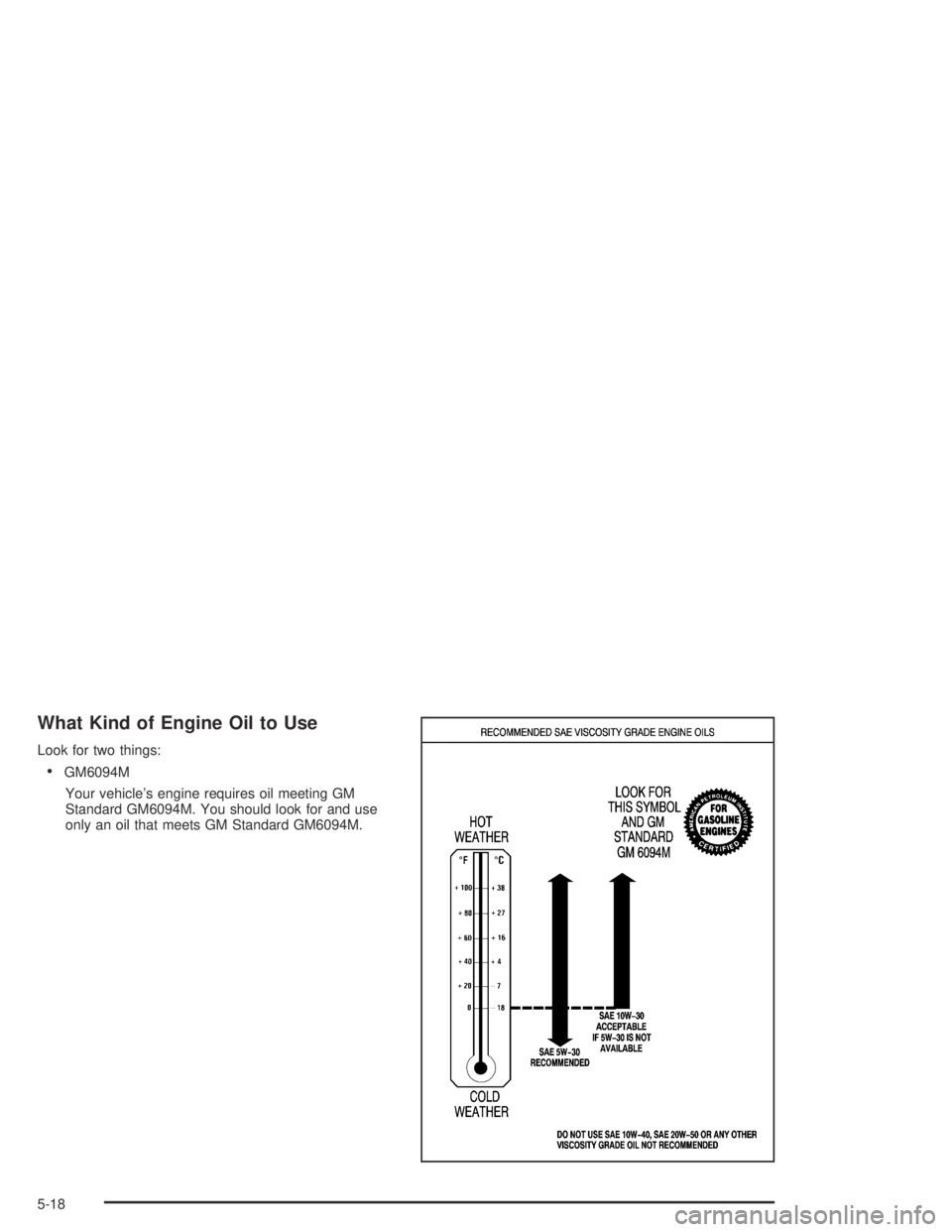PONTIAC VIBE 2005 Owners Manual
VIBE 2005
PONTIAC
PONTIAC
https://www.carmanualsonline.info/img/50/40865/w960_40865-0.png
PONTIAC VIBE 2005 Owners Manual
Trending: fuel tank, remove seats, seats, fuel tank capacity, oil dipstick, navigation, Latch
Page 231 of 374

When replacing the fuel cap, turn it to the right
(clockwise) until it clicks. Make sure the cap is fully
installed. The diagnostic system can determine if the
fuel cap has been left off or improperly installed.
This would allow fuel to evaporate into the atmosphere.
SeeMalfunction Indicator Lamp on page 3-35.
{CAUTION:
If a �re starts while you are refueling, do not
remove the nozzle. Shut off the �ow of fuel
by shutting off the pump or by notifying the
station attendant. Leave the area immediately.
Notice:If you need a new fuel cap, be sure to get the
right type. Your dealer can get one for you. If you get
the wrong type, it may not �t properly. This may
cause your malfunction indicator lamp to light and
may damage your fuel tank and emissions system.
SeeMalfunction Indicator Lamp on page 3-35.
Filling a Portable Fuel Container
{CAUTION:
Never �ll a portable fuel container while it is in
your vehicle. Static electricity discharge from
the container can ignite the gasoline vapor.
You can be badly burned and your vehicle
damaged if this occurs. To help avoid injury
to you and others:
Dispense gasoline only into approved
containers.
Do not �ll a container while it is inside a
vehicle, in a vehicle’s trunk, pickup bed or
on any surface other than the ground.
Bring the �ll nozzle in contact with the
inside of the �ll opening before operating
the nozzle. Contact should be maintained
until the �lling is complete.
Do not smoke while pumping gasoline.
5-9
Page 232 of 374
Checking Things Under
the Hood
{CAUTION:
An electric fan under the hood can start up
and injure you even when the engine is not
running. Keep hands, clothing and tools away
from any underhood electric fan.
{CAUTION:
Things that burn can get on hot engine parts
and start a �re. These include liquids like fuel,
oil, coolant, brake �uid, windshield washer and
other �uids, and plastic or rubber. You or
others could be burned. Be careful not to drop
or spill things that will burn onto a hot engine.
Hood Release
To open the hood, do the following:
1. Pull the release
handle inside the
vehicle. It is located
below the instrument
panel to the left of
the steering wheel.
5-10
Page 233 of 374
2. Then go to the front of the vehicle and pull up on
the secondary hood release. The lever is located
near the middle of the hood.
3. Lift the hood.4. Release the hood prop
rod from its retainer
and put it into the slot
in the hood. To insert
the hood prop rod
into the slot, move it
straight up. If it is
moved to the side or
toward the inside of
the vehicle, it may
become detached.
Before closing the hood, be sure all the �ller caps are
on properly. Make sure to return the hood prop rod
carefully back to its retainer to avoid damaging
the vehicle.
5-11
Page 234 of 374
Engine Compartment Overview
When you open the hood of the 1.8L L4 (VIN Code 8) engine, you will see the following:
5-12
Page 235 of 374
A. Windshield Washer Fluid Reservoir. See “Adding
Washer Fluid” underWindshield Washer Fluid
on page 5-38.
B. Power Steering Fluid Reservoir. SeePower Steering
Fluid on page 5-37.
C. Radiator Pressure Cap. SeeRadiator Pressure Cap
on page 5-30.
D. Engine Oil Dipstick. See “Checking Engine Oil”
underEngine Oil on page 5-16.
E. Coolant Recovery Tank. SeeCooling System on
page 5-32.
F. Engine Oil Fill Cap. See “When to Add Engine Oil”
underEngine Oil on page 5-16.G. Automatic Transaxle Fluid Dipstick (If Equipped).
See “Checking the Fluid Level” underAutomatic
Transaxle Fluid on page 5-23.
H. Brake Master Cylinder Reservoir and Hydraulic
Clutch (If Equipped). See “Brake Fluid” underBrakes
on page 5-39andHydraulic Clutch on page 5-27.
I. Engine Air Cleaner/Filter. SeeEngine Air
Cleaner/Filter on page 5-21.
J. Battery. SeeBattery on page 5-42.
K. Engine Compartment Fuse Block. SeeEngine
Compartment Fuse Block on page 5-98.
5-13
Page 236 of 374
When you open the hood of the 1.8L L4 (VIN Code L) engine, you will see the following:
5-14
Page 237 of 374
A. Windshield Washer Fluid Reservoir. See “Adding
Washer Fluid” underWindshield Washer Fluid
on page 5-38.
B. Power Steering Fluid Reservoir. SeePower Steering
Fluid on page 5-37.
C. Radiator Pressure Cap. SeeRadiator Pressure Cap
on page 5-30.
D. Engine Oil Dipstick. See “Checking Engine Oil”
underEngine Oil on page 5-16.
E. Coolant Recovery Tank. SeeCooling System on
page 5-32.
F. Engine Oil Fill Cap. See “When to Add Engine Oil”
underEngine Oil on page 5-16.G. Automatic Transaxle Fluid Dipstick (If Equipped).
See “Checking the Fluid Level” underAutomatic
Transaxle Fluid on page 5-23.
H. Brake Master Cylinder Reservoir and Hydraulic
Clutch (If Equipped). See “Brake Fluid” underBrakes
on page 5-39andHydraulic Clutch on page 5-27.
I. Engine Air Cleaner/Filter. SeeEngine Air
Cleaner/Filter on page 5-21.
J. Battery. SeeBattery on page 5-42.
K. Engine Compartment Fuse Block. SeeEngine
Compartment Fuse Block on page 5-98.
5-15
Page 238 of 374
Engine Oil
If the engine oil pressure
light appears on the
instrument cluster,
it means you need to
check your engine oil level
right away.
For more information, seeOil Pressure Light on
page 3-38.
You should check your engine oil level regularly; this is
an added reminder.
Checking Engine Oil
It is a good idea to check your engine oil every time you
get fuel. In order to get an accurate reading, the oil
must be warm and the vehicle must be on level ground.
The engine oil dipstick handle is a yellow loop. See
Engine Compartment Overview on page 5-12for
the location of the engine oil dipstick.
1. Turn off the engine and give the oil several minutes
to drain back into the oil pan. If you do not do this,
the oil dipstick might not show the actual level.
2. Pull out the dipstick and clean it with a paper towel
or cloth, then push it back in all the way. Remove it
again, keeping the tip down, and check the level.
1.8L L4 (VIN Code 8) Engine
5-16
Page 239 of 374
When to Add Engine Oil
If the oil is at or below the hole at the tip of the dipstick,
then you will need to add at least one quart of oil.
But you must use the right kind. This section explains
what kind of oil to use. For engine oil crankcase
capacity, seeCapacities and Speci�cations on
page 5-100.
Notice:Do not add too much oil. If your engine has
so much oil that the oil level gets above the upper
hole, your engine could be damaged.SeeEngine Compartment Overview on page 5-12for
the location of the engine oil �ll cap.
Be sure to add enough oil to put the level somewhere
in the proper operating range. Push the dipstick all
the way back in when you are through. 1.8L L4 (VIN Code L) Engine
5-17
Page 240 of 374
What Kind of Engine Oil to Use
Look for two things:
GM6094M
Your vehicle’s engine requires oil meeting GM
Standard GM6094M. You should look for and use
only an oil that meets GM Standard GM6094M.
5-18
Trending: mirror controls, radio antenna, automatic transmission fluid, cruise control, wiring, navigation system, oil level

